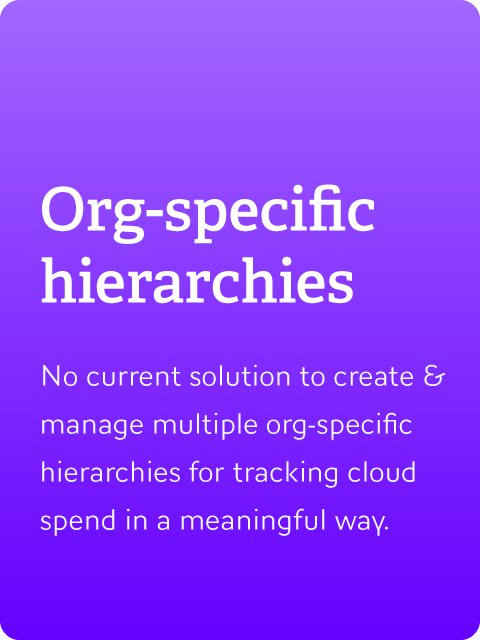Cost Optimizer
enterprise | cloud | finance
Cost Optimizer is a module in Cisco’s CloudCenter Suite that aims at providing visibility into cloud spend along with savings recommendations to cut costs.

Project Background
As part of an effort to get into the cloud space, Cisco’s acquisitions of Cliqr Technologies and Cmpute.io lead to the conception of CloudCenter Suite, a hybrid cloud management platform.
Part of the core team that designed and built Cost Optimizer – a module within CloudCenter Suite, that focuses on helping users gain insight into their cloud costs and save money.
scope
Entire Product
End-to-end design of the entire product, including design strategy, interaction design, research and crafting final deliverables.
team
Cisco CloudCenter Suite
Engineering Leads & PMs/TMEs
timeline
Jan 2018 – Apr 2020
MVP launch was Oct ’18, and the product has since undergone multiple major releases.
Problem Space
Due to the lack of existing multi-cloud cost solutions in the market, IT admins often need to spend hours exporting cost data from multiple cloud providers and managing their own spreadsheets.
While there might be best practices for saving money on cloud costs, those recommendations are too generic and don’t address a team’s cloud needs and spending patterns.
Additionally, organizations have different ways of tracking cloud costs across departments, teams, ad-hoc projects, etc. Current solutions and cloud consoles only allowed for the creation of one singular hierarchy, which wasn’t a scalable offering.
problem statement
Need for a multi-cloud solution that offers insight into cloud spend along with actionable savings recommendations, based on current utilization of cloud resources.
Challenges
product challenges
-
Fast evolving technologies in the cloud domain
-
Saturated space with existing cost savings & visibility tools – competitive edge with actionable recommendations
-
Technical challenges with implementing new features, which vary greatly between cloud providers
design challenges
-
Technical domain with IT power users
-
Domain’s technical learning curve meant that designers had to wear the additional hat of a Product Manager
-
Lack of access to customers to get feedback on product as it evolves

Process for MVP
Working quickly and iteratively, with only 8 months to build and ship a product from scratch, the CO team made the most of the limited resources available. We eagerly sought feedback and insight, and pushed ourselves to build an impact worthy MVP. Designs were ready by August 2018, about 6 months from initial project kick-off.
As part of the creative and development process, the design and engineering team were involved in the following (sometimes ongoing) activities –
-
Competitive analysis of existing products
-
Customer interviews with existing CloudCenter customers
-
Frequent product discussions & design critiques with evolving deliverables
-
Hands-on workshop with potential customers
Target Users
Target users for Cost Optimizer are technical power users when it comes to cloud management and deployment. The following personas were based on existing CloudCenter customers and their needs, as well as internal employees who were at the time using competitor products.

it / company admin
Sets up system
Manages company-wide spending

department owner
Manages spending across a department, or cost group

team manager
Needs visibility into team and project spending

finance person
Needs visibility into spending across (sub)departments
Research Discoveries & Insights
-
Most customers used a combination of private and public clouds so showing a multicloud view would be CloudCenter’s greatest advantage, as current competitors were limited to the space of a cloud provider or two.
-
Allowing company admins to create custom hierarchies based on their organization was key, as this would serve as the backbone to how they would view and plan their cloud spend.
-
Actionable savings recommendations across both private and public clouds would give Cost Optimizer a competitive edge.
-
Cost Optimizer team also recognized the opportunity to bring a consumer-grade user experience to a technical enterprise product.
Features
Working closely with Engineering Leads (also acting Product Leads), the team defined three key feature areas for Cost Optimizer, which would give the product a competitive edge over other cloud cost solutions.

Cost Reports
Detailed breakdown of cloud cost across providers, categories, departments, etc.
Recommendations
Actionable suggestions to save on cloud cost, based on current patterns.

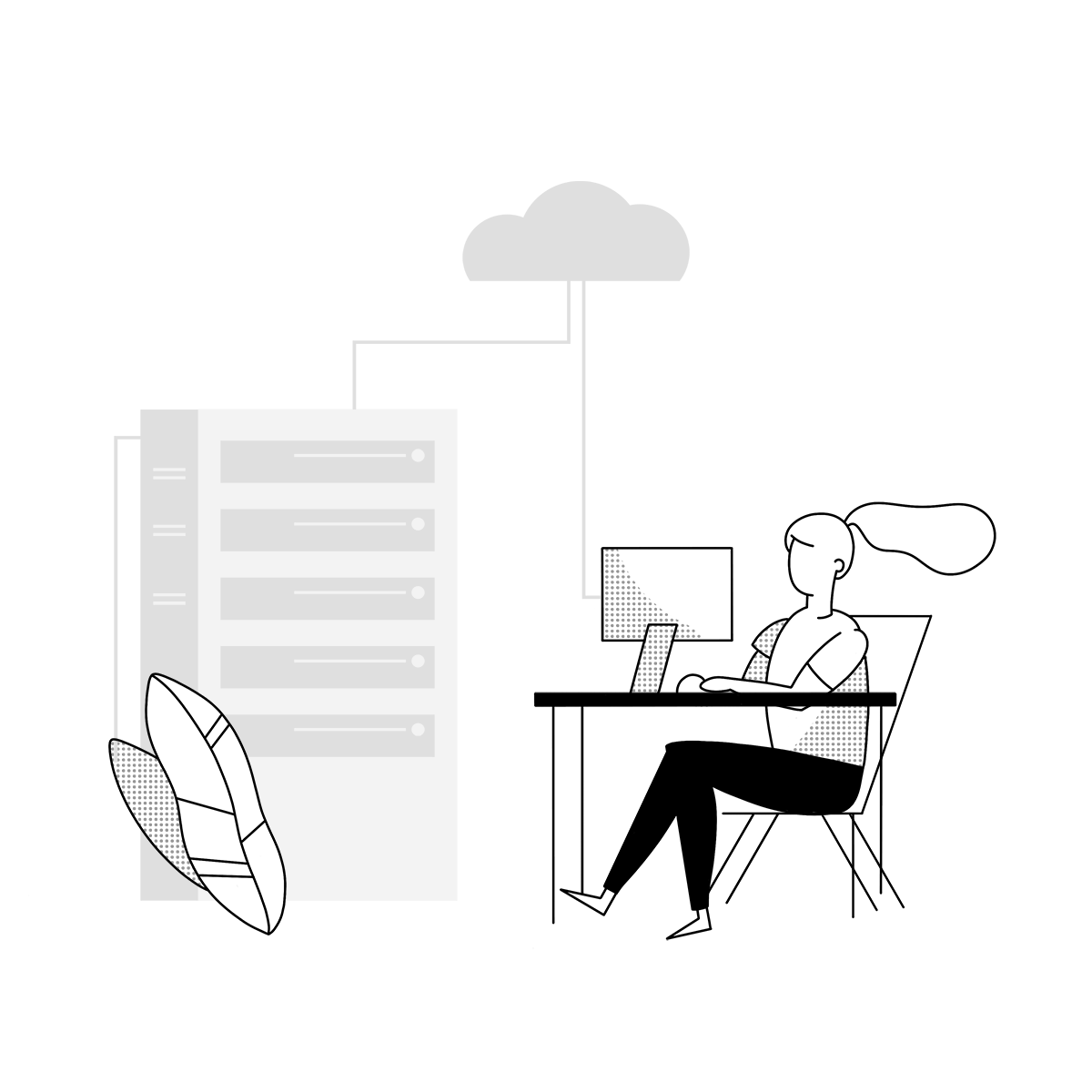
Admin
Configurable settings and preferences, including the ability to create multiple custom hierarchies.
IA & User Flow with Feature mapping

Early Iterations
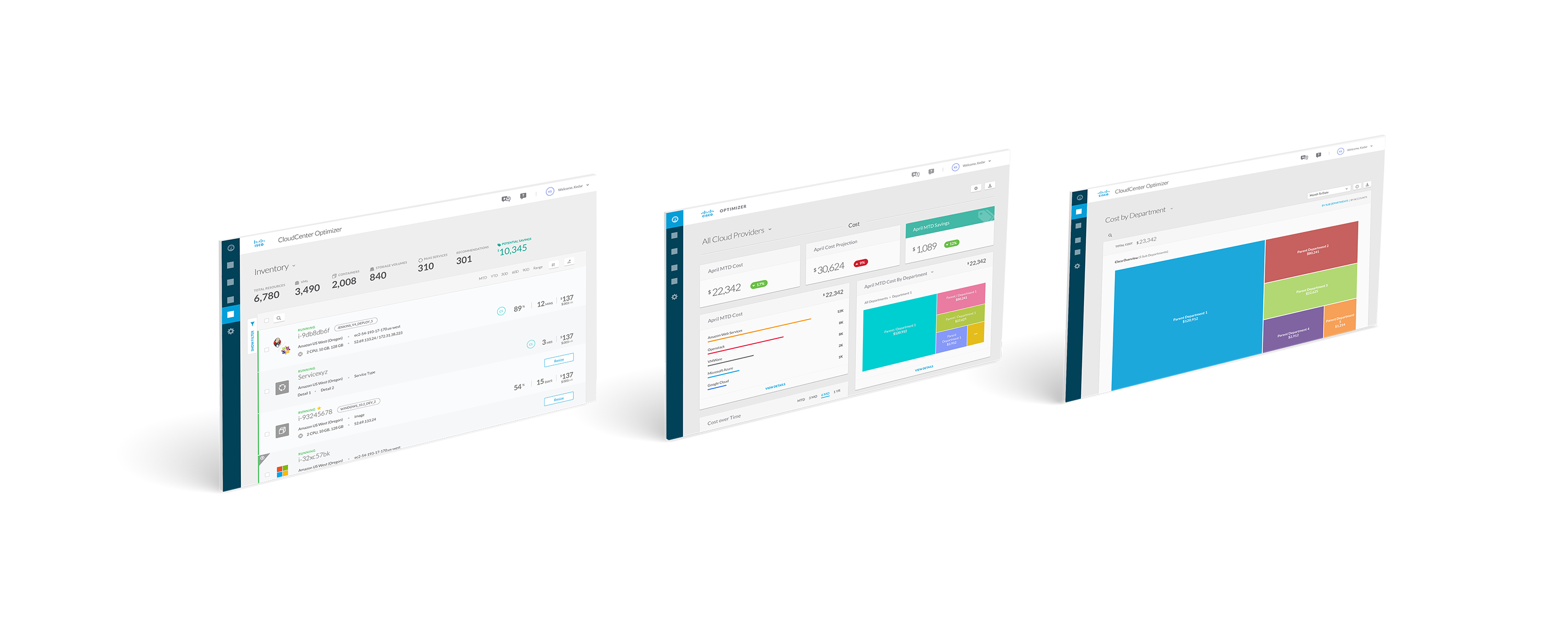
Quick wireframes and work-in-progress screens were presented to existing customers for concept validation. During these conversations, the team gained insights into how Cost Optimizer could differentiate itself from existing competitors, while adding value to the overall CloudCenter Suite.
MVP Release
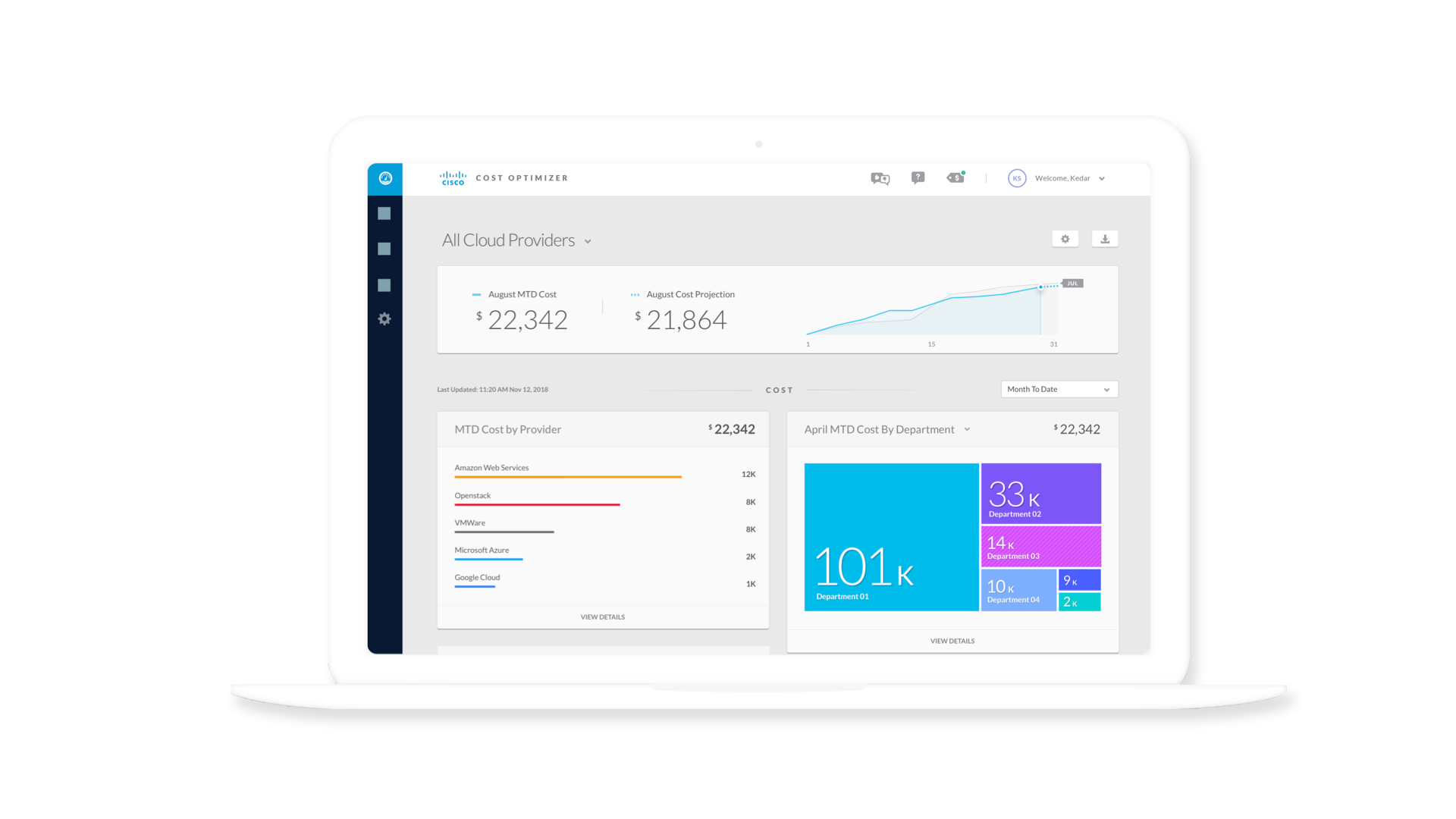
Dashboard
At a glance view of cloud spend, providing opportunities to dive into any possible spending anomalies.

Cost Reports
Reports provide a detailed breakdown of spend by different dimensions.
I worked on creating data visualizations and charts as part of this project, and collaborated with external cross-functional teams to contribute those back to Particle, an internal design system.
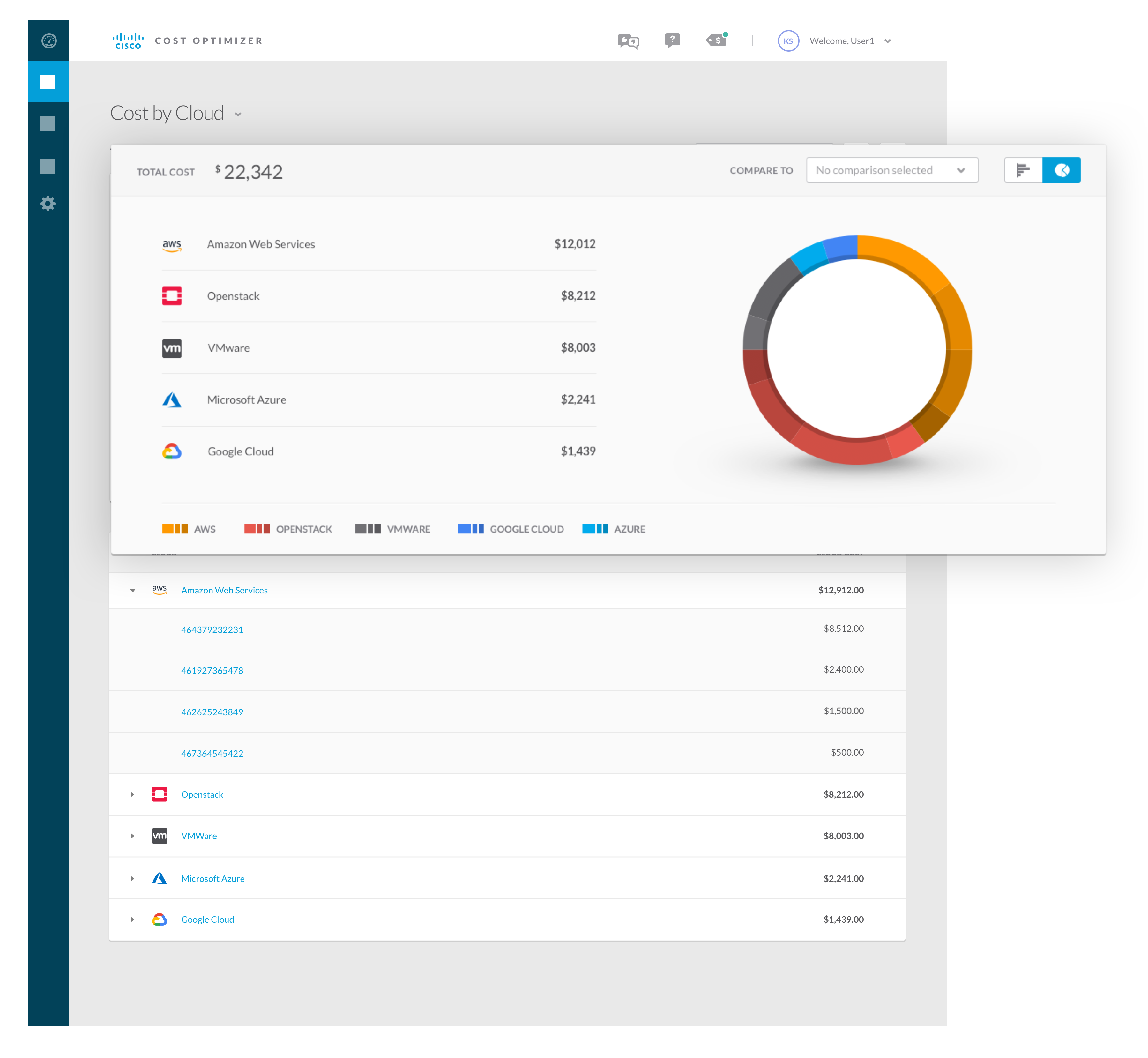
Savings & Recommendations
Based on current utilization of cloud resources, Cost Optimizer generates recommendation reports with actionable savings suggestions.
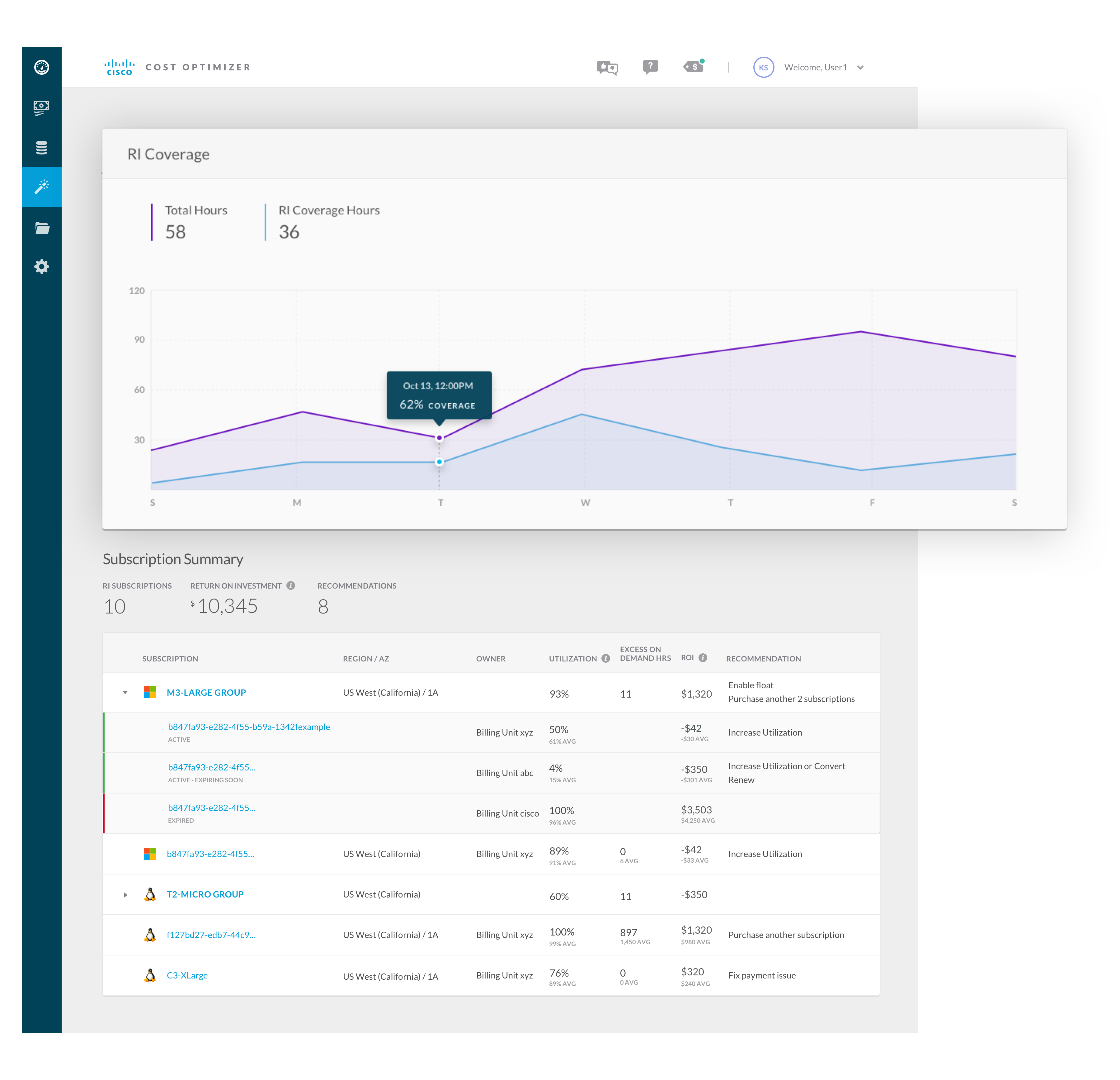
Cost Groups
Admins within Cost Optimizer can create multiple hierarchical organizations, and associate existing cloud accounts to each level within the custom org.
Find more details on the project here.
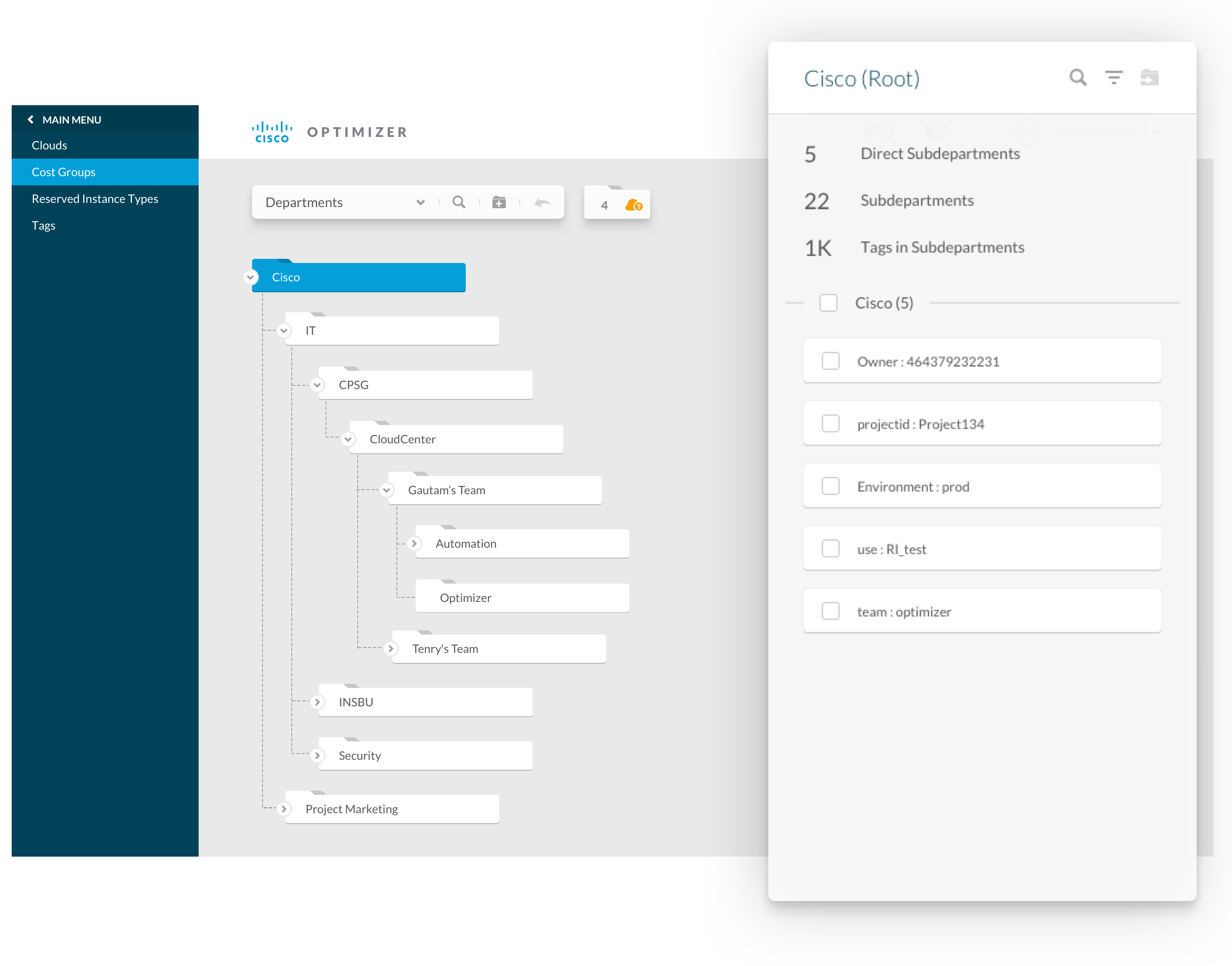
Learnings from MVP
While the overall feedback was positive, particularly about the user experience, there were some interesting insights from customers –
- Designing for the technical user requires rethinking certain UX principles e.g.. less isn’t more. Customers wanted to see all relevant data upfront, and then decide how they wanted to slice and dice it.
- Interactivity of charts and reports is key – almost all customers wanted to drill down into charts and see more relevant information. The static charts were providing them with just high-level data.
- Recommendations & savings were too hidden and seemed like an afterthought, rather than the selling point of Cost Optimizer.
- Product & feature set was basic compared to competitors at the time.
Cost Optimizer Versions 2 & 3
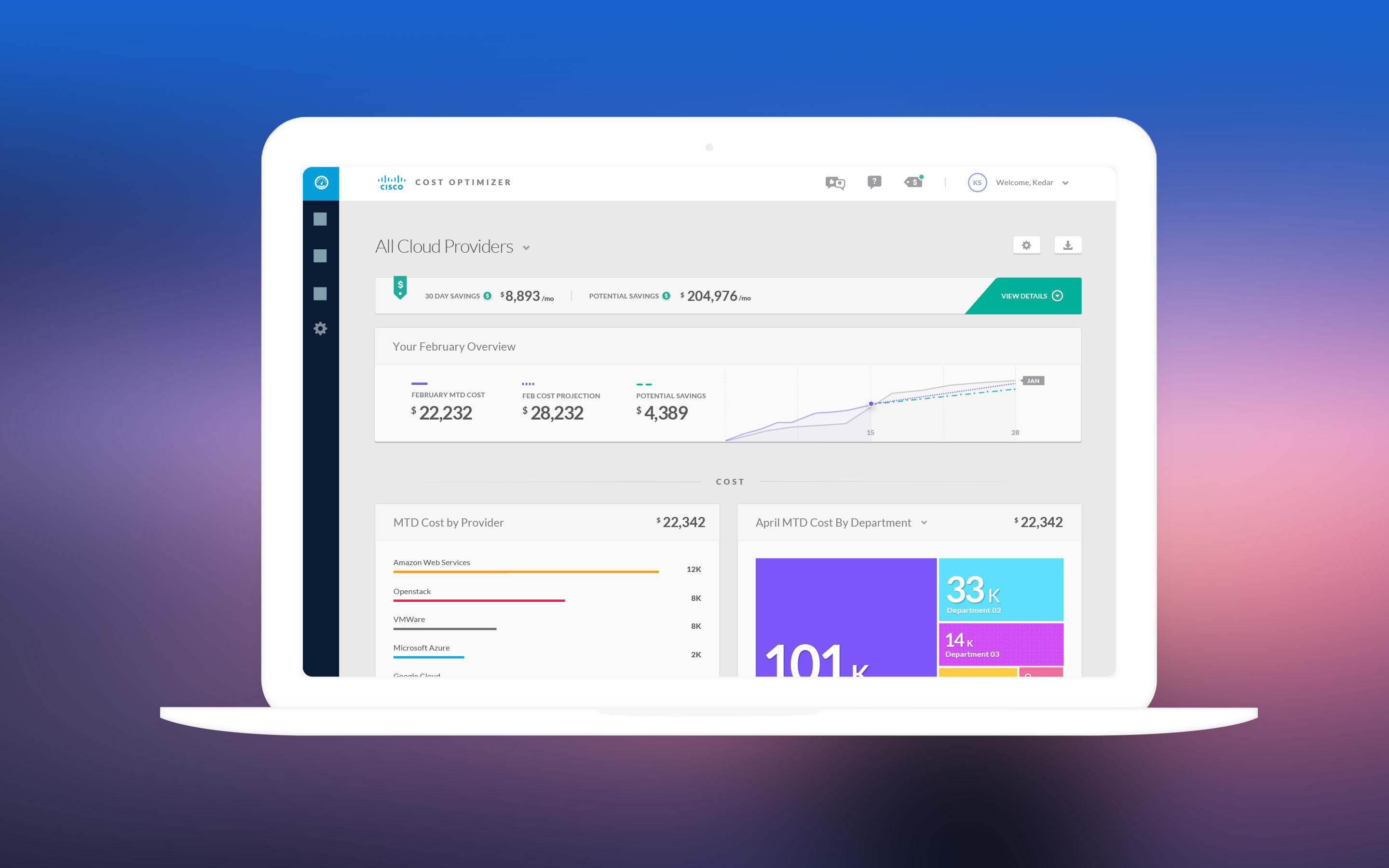
Future Release Roadmap
Cost Optimizer continues to improve and grow. In addition to quick wins, some larger items that are part of the roadmap include –
DASHBOARD REDESIGN
UX led feature to overhaul the dashboard and remove redundancies in the way info is currently displayed.
“over time” views
Support over time views across all reports to easily identify trends in spends and behavior.
policy driven automation
Instead of remedial actions, push the product to be more policy driven with less supervision required.




